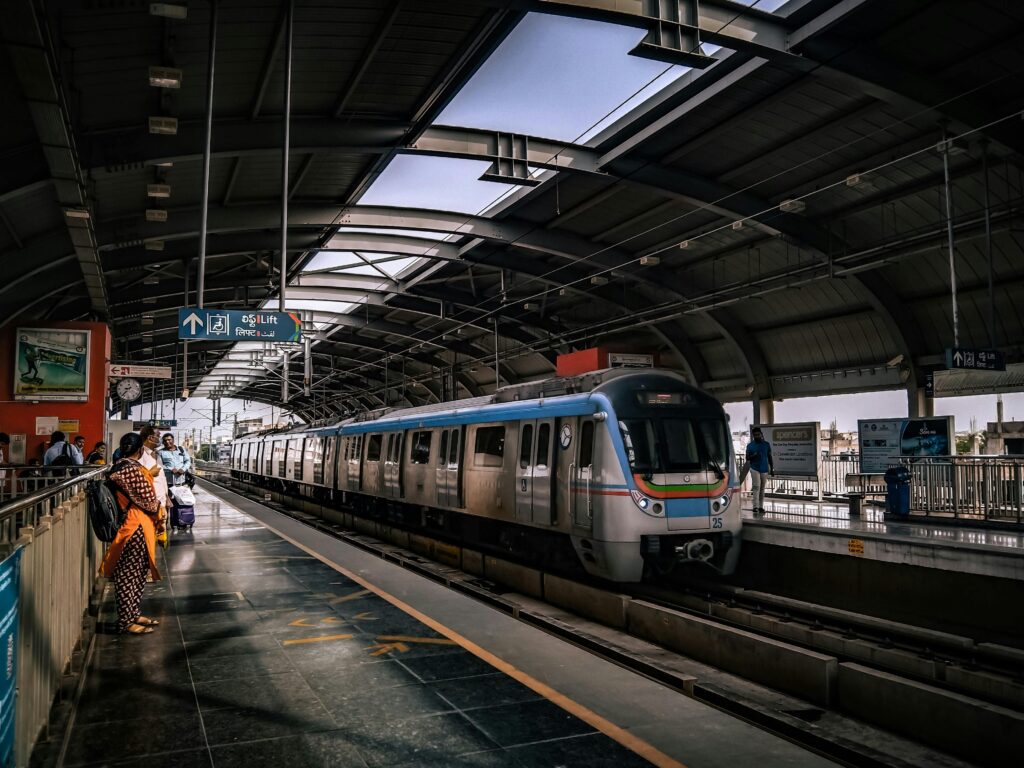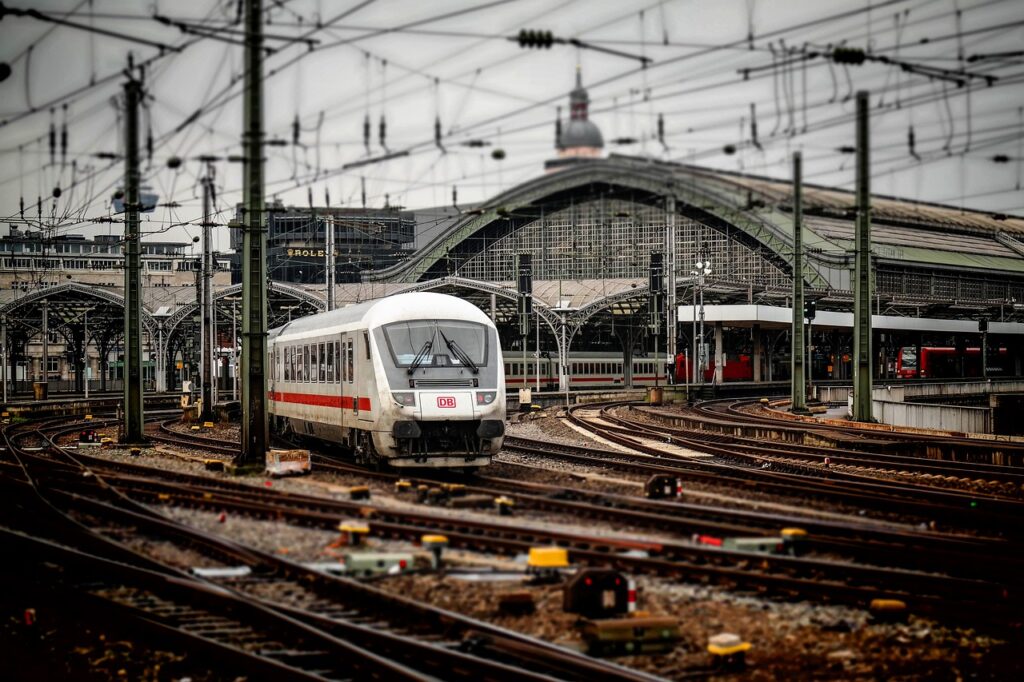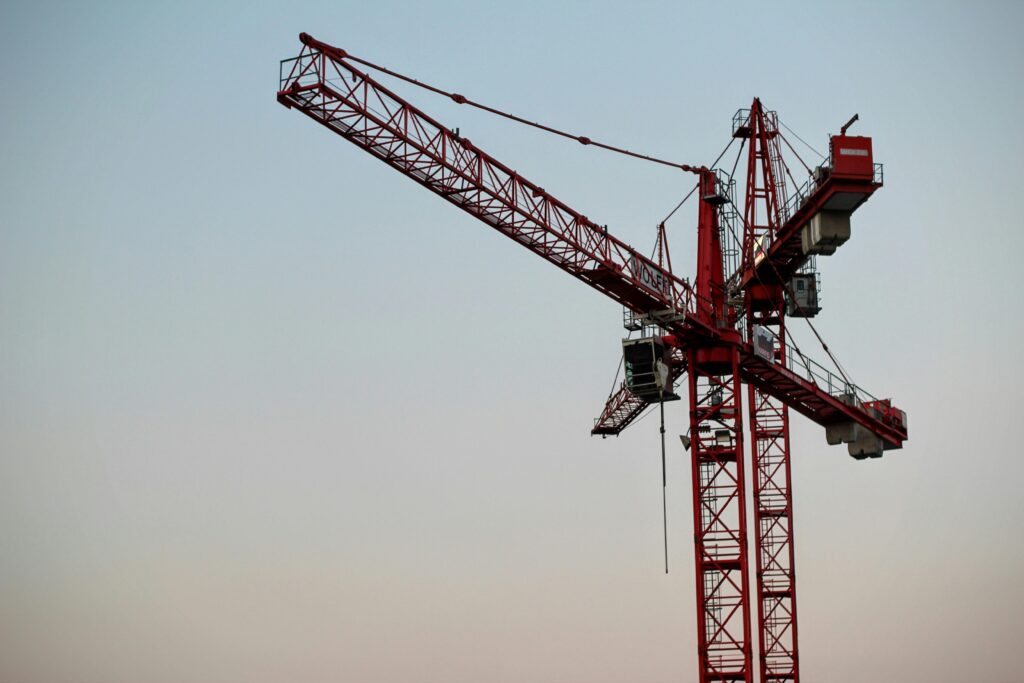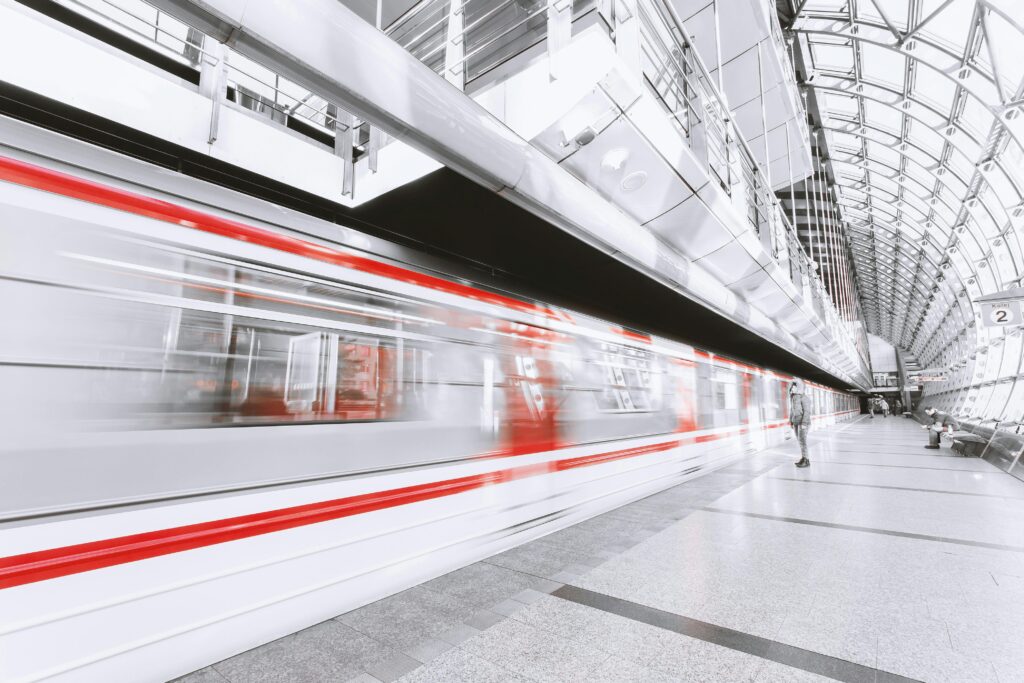
India’s railway stations are the lifelines of the nation, connecting over 23 million passengers daily across bustling metros and remote towns. From the iconic Chhatrapati Shivaji Maharaj Terminus (CSMT) in Mumbai to smaller stations like Hubballi, these hubs are more than transit points they’re cultural landmarks and economic engines. As India races toward its 2030 urban and digital goals, railway stations are being reimagined as smart hubs, integrating cutting-edge technology, sustainability, and inclusive design. This blog explores how India is transforming its railway stations into future-ready ecosystems, showcasing pioneering projects, innovative features, and the challenges of balancing heritage with modernity in 2025.
The Need for Smart Railway Stations in India

With India’s urban population projected to reach 600 million by 2030, railway stations face unprecedented pressure: overcrowding, outdated infrastructure, and accessibility gaps. The COVID-19 pandemic further highlighted the need for safer, tech-enabled spaces. The Indian Railways’ Station Redevelopment Programme, launched under the Amrit Bharat Station Scheme, aims to modernize 1,300 stations by 2030, with a $15 billion investment. Smart stations are designed to enhance commuter experiences, boost local economies, and align with initiatives like Digital India and Smart Cities Mission. A 2024 survey by the Council of Architecture India found that 78% of commuters want stations with better tech, green spaces, and accessibility.
Key Features of India’s Smart Railway Stations
- IoT and AI for Seamless Operations
Internet of Things (IoT) sensors and Artificial Intelligence (AI) optimize station management. At New Delhi Railway Station, AI-driven crowd analytics monitor passenger flow, reducing congestion by 35% during peak hours. IoT-enabled smart ticketing kiosks streamline bookings, supporting UPI and QR-code payments. - Sustainable Design and Energy Efficiency
Solar panels, rainwater harvesting, and green roofs make stations eco-friendly. Gandhinagar Capital Station, revamped in 2021, generates 1 MW of solar power, meeting 70% of its energy needs. By 2030, 500 stations aim to be net-zero, per Indian Railways’ sustainability goals. - Multifunctional Hub Integration
Smart stations are becoming mixed-use spaces with retail, coworking zones, and cultural venues. Chennai Central’s 2024 redevelopment includes a rooftop food plaza and a museum showcasing Dravidian architecture, boosting local tourism and revenue. - Universal Accessibility
Inclusive design ensures access for all. Stations like Bhubaneswar now feature tactile pathways, braille signage, and low-height ticket counters, catering to differently-abled commuters. Ramps and escalators are standard in 90% of redeveloped stations. - Touchless and Health-Focused Features
Post-pandemic, touchless technologies are critical. Automatic platform gates, UV sanitization for escalators, and sensor-based water stations, as seen at Howrah Station, minimize health risks while enhancing hygiene. - Smart Mobility Integration
Stations are hubs for last-mile connectivity. Hyderabad’s Secunderabad Station integrates e-bike rentals, EV charging points, and metro links, reducing commuter reliance on private vehicles and cutting urban emissions by 15%.
Pioneering Smart Station Projects in India

- Habibganj (Rani Kamalapati) Station, Bhopal
India’s first private-public partnership (PPP) redevelopment, completed in 2021, set the smart station benchmark. With a solar rooftop, IoT-based parking, and an air-conditioned concourse, it rivals global airports. By 2025, it added AI chatbots for real-time train updates, serving 50,000 daily passengers. - New Delhi Railway Station (NDLS) Redevelopment
Slated for completion by 2026, NDLS is becoming a “city within a city.” Its 2025 upgrades include a green roof, 5G-enabled Wi-Fi, and a retail galleria. AI monitors structural health, preserving the station’s colonial facade while adding modern amenities. - CSMT, Mumbai
A UNESCO World Heritage Site, CSMT’s 2024 retrofit balances heritage with tech. Smart lighting highlights its Gothic arches, while IoT sensors manage 1.5 million daily commuters. A coworking lounge and e-market for local artisans enhance its economic impact. - Guwahati Station, Assam
Revamped in 2025, Guwahati integrates Northeast India’s cultural motifs with smart features like solar-powered signage and flood-resistant platforms, critical for Assam’s monsoon-prone region. A virtual reality kiosk narrates Assam’s tea heritage to tourists.
Challenges in Building Smart Stations

Transforming India’s 7,000+ railway stations is a monumental task. Funding remains a bottleneck redeveloping a single major station costs $50–100 million, straining public budgets. Smaller stations, like those in Bihar, often lag due to limited resources, with only 20% slated for smart upgrades by 2030, per a 2025 NIUA report.
Heritage preservation is another challenge. Retrofitting colonial-era stations like CSMT requires delicate interventions to avoid damaging historic elements. Public resistance, as seen in protests over Chennai Central’s commercialization, highlights the need for community buy-in. Maintenance of tech infrastructure solar panels in dusty Rajasthan or IoT in humid Kolkata demands robust, localized solutions.
The Future of India’s Smart Stations by 2030
By 2030, India’s railway stations will be more than transit points they’ll be vibrant urban ecosystems. AI will predict train delays with 95% accuracy, as piloted at Bengaluru’s Sir M. Visvesvaraya Terminal. Blockchain-based ticketing, tested at Ahmedabad Station, will ensure fraud-free bookings. Stations will host urban farms, like rooftop gardens at Kanpur Central, addressing food security and cooling cities.
Rural stations will adopt low-cost smart kits solar-powered Wi-Fi and SMS-based updates bridging digital divides. Cultural integration will deepen, with stations like Varanasi’s showcasing Banarasi motifs via holographic displays. Autonomous shuttles and drone deliveries for station retail, trialed in Pune, will redefine last-mile connectivity.
Education and collaboration are key. Programs at IIT Kharagpur are training architects in parametric design for stations, while hackathons by Indian Railways invite startups to innovate. As architect Hafeez Contractor noted in a 2025 interview, “Stations must be India’s gateways functional, green, and soulful.”
Tips for Architects Designing Smart Stations

- Balance Heritage and Tech: Use non-invasive tech, like hidden IoT sensors, to preserve historic facades.
- Prioritize Scalability: Design modular systems solar kits, smart kiosks for small and large stations.
- Engage Communities: Involve local artisans and commuters in planning to ensure cultural resonance.
- Focus on Resilience: Use flood-proof materials in monsoon-heavy regions like Assam or Kerala.
- Leverage Local Startups: Partner with firms like Bengaluru’s Ather Energy for EV integration.
Conclusion
India’s railway stations are on the cusp of a smart revolution, blending technology, sustainability, and cultural pride. From Bhopal’s Rani Kamalapati to Mumbai’s CSMT, these hubs are becoming inclusive, green, and multifunctional, ready to serve a billion commuters. Challenges like funding and heritage preservation require innovative solutions, but the vision is clear: by 2030, stations will be India’s urban gateways, connecting people, places, and possibilities. Let’s design railway hubs that move India forward while honoring its past.

